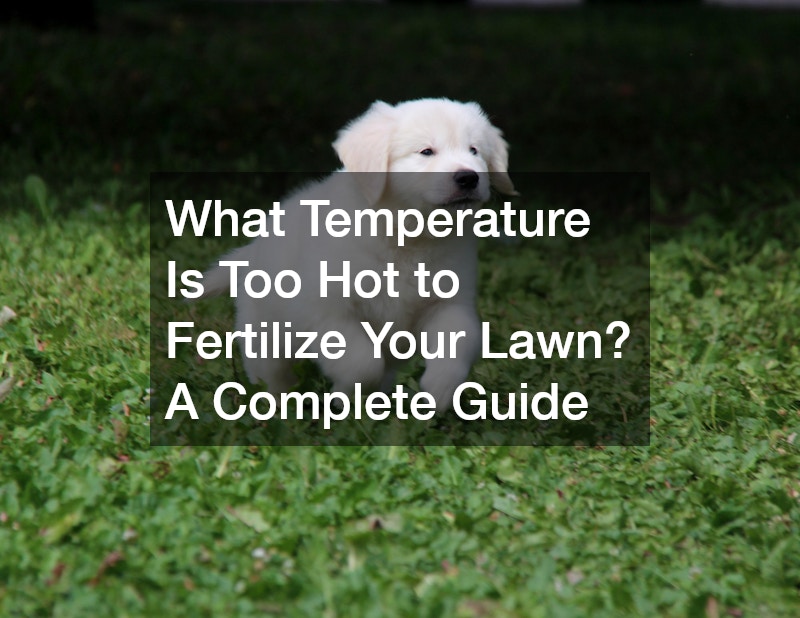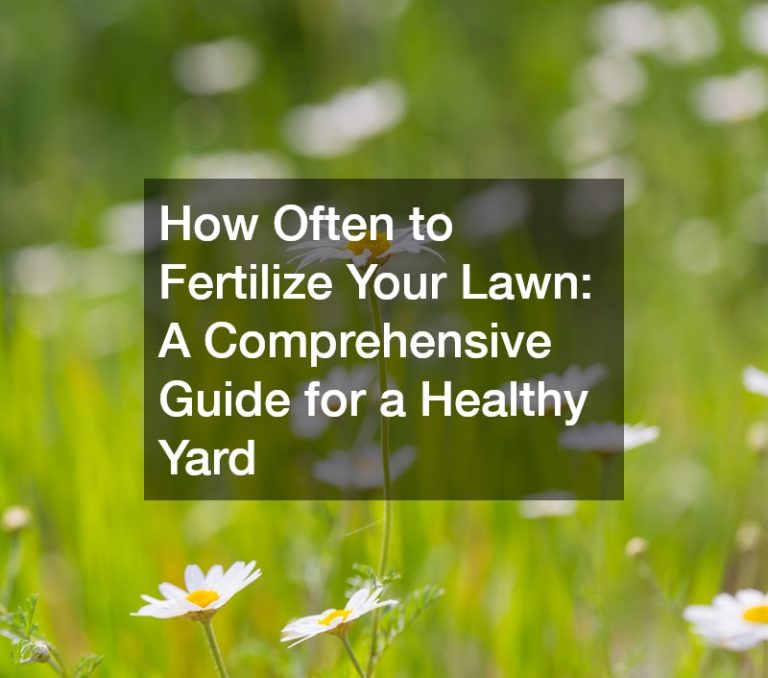What Temperature Is Too Hot to Fertilize Your Lawn? A Complete Guide
Fertilizing your lawn is an essential part of maintaining its health and appearance, but doing so during extreme heat can lead to more harm than good. Hot weather poses unique challenges for lawn care, as heat stress can cause grass to become weak, making it more susceptible to damage. Understanding the right temperature range for fertilizing your lawn is crucial to ensuring your grass stays healthy and resilient throughout the summer.
In this article, we’ll explore what temperature is too hot to fertilize your lawn, how extreme heat affects grass, and the best practices for keeping your lawn healthy during warm weather.
Why High Temperatures Are Harmful for Fertilizing
High temperatures, particularly those above 85°F (29°C), can stress your lawn. When grass is stressed due to heat, it diverts its energy toward survival, conserving water and slowing its growth. Fertilizing in these conditions can lead to a few potential problems:
- Nutrient Burn: Most fertilizers contain nitrogen, which is crucial for grass growth. However, in hot weather, applying fertilizer can “burn” the grass, causing brown spots and damaging your lawn’s root system.
- Increased Water Needs: Fertilizer encourages grass to grow, but in hot weather, this can increase your lawn’s water needs at a time when the soil is likely dry. Applying fertilizer when your lawn is already stressed can cause it to require more water than is available, leading to drought stress.
- Nutrient Runoff: High temperatures often mean dry, compacted soil. If you fertilize during a heatwave, the nutrients may not properly absorb into the soil and can run off during watering or rain, wasting both fertilizer and water.
What Temperature Is Too Hot to Fertilize Your Lawn?
In general, you should avoid fertilizing your lawn when temperatures rise above 85°F (29°C). This is the point at which many types of grass begin to experience heat stress, and applying fertilizer can do more harm than good.
- Cool-Season Grasses (like fescue, Kentucky bluegrass, and ryegrass) are especially vulnerable to heat and should not be fertilized when temperatures exceed 80°F (27°C). These grasses naturally slow their growth during the summer to conserve energy, so adding fertilizer in extreme heat can stress them further.
- Warm-Season Grasses (like Bermuda, zoysia, and St. Augustine) are better equipped to handle high temperatures, but even these types of grass can suffer when temperatures exceed 90°F (32°C). Fertilizing at these temperatures can lead to nutrient burn and may require extra watering.
Signs Your Lawn Is Too Hot to Fertilize

Sometimes, your lawn’s condition will provide clear signs that it’s too hot to fertilize. Here are some signs to watch for:
- Wilting Grass Blades: If your grass is wilting, it’s likely experiencing heat stress. Fertilizing under these conditions can cause further damage.
- Browning or Yellowing: If your lawn is turning brown or yellow due to heat, fertilizing can exacerbate the problem by burning the grass.
- Dormancy: Some types of grass, particularly cool-season varieties, will go dormant during extreme heat. Applying fertilizer during dormancy will not benefit the grass and may even damage it.
How to Protect Your Lawn in Hot Weather
Caring for your lawn during hot weather requires a different approach. Here are some tips to help protect your grass when temperatures rise:
1. Adjust Your Fertilization Schedule
To avoid damaging your lawn, adjust your fertilization schedule to the cooler months of the year. For cool-season grasses, focus on fertilizing in the early spring and fall. For warm-season grasses, early summer is ideal, but avoid fertilizing in the peak heat of mid-to-late summer.
2. Water Effectively
Watering your lawn properly during hot weather is crucial. Deep, infrequent watering is more effective than frequent, shallow watering, as it encourages the roots to grow deeper into the soil where they are less affected by surface heat. Water your lawn early in the morning, preferably before 10 AM, to minimize evaporation and allow the grass to absorb moisture before the heat of the day.
3. Mow High
Mowing your lawn at a higher setting during hot weather helps to shade the soil and retain moisture, reducing heat stress. Avoid cutting more than one-third of the grass blade in a single mow, as this can shock the grass and make it more vulnerable to heat damage.
4. Use Slow-Release Fertilizer
If you must fertilize during warmer months, opt for a slow-release fertilizer. This type of fertilizer releases nutrients gradually, reducing the risk of burning your grass. Slow-release fertilizers are less likely to cause a sudden surge in growth, which can be problematic during high temperatures when water is limited.
5. Avoid Fertilizing Before Rainstorms
It may seem counterintuitive, but fertilizing before a heavy rainstorm can lead to nutrient runoff, especially if the soil is dry and compacted from heat. Wait until the ground is more receptive to absorption, and avoid heavy fertilization right before downpours.
Best Times of Year to Fertilize Your Lawn
Rather than fertilizing during extreme heat, it’s better to time your fertilization around the growing seasons of your grass type.
Cool-Season Grasses
- Spring (March-April): Apply a light fertilization to help your lawn recover from winter dormancy.
- Fall (September-November): Focus on a heavier fertilization in the fall to promote strong root development and prepare your lawn for the winter.
Warm-Season Grasses
- Late Spring (May-June): This is the best time to apply fertilizer as warm-season grasses are actively growing.
- Early Summer (June-July): Apply another round of fertilizer, but avoid fertilizing during heatwaves or when temperatures exceed 90°F (32°C).
Conclusion
Fertilizing your lawn at the wrong time—especially during extreme heat—can do more harm than good. When temperatures rise above 85°F (29°C), your grass is already under stress, and adding fertilizer can result in nutrient burn and further damage. It’s best to avoid fertilizing during the hottest parts of the summer and instead focus on watering and other maintenance practices to keep your lawn healthy.
For the best results, adjust your fertilization schedule to cooler months, use slow-release fertilizers if necessary, and monitor your lawn for signs of heat stress. With these tips, you’ll ensure your lawn stays healthy and vibrant, even during the hottest days of summer.

